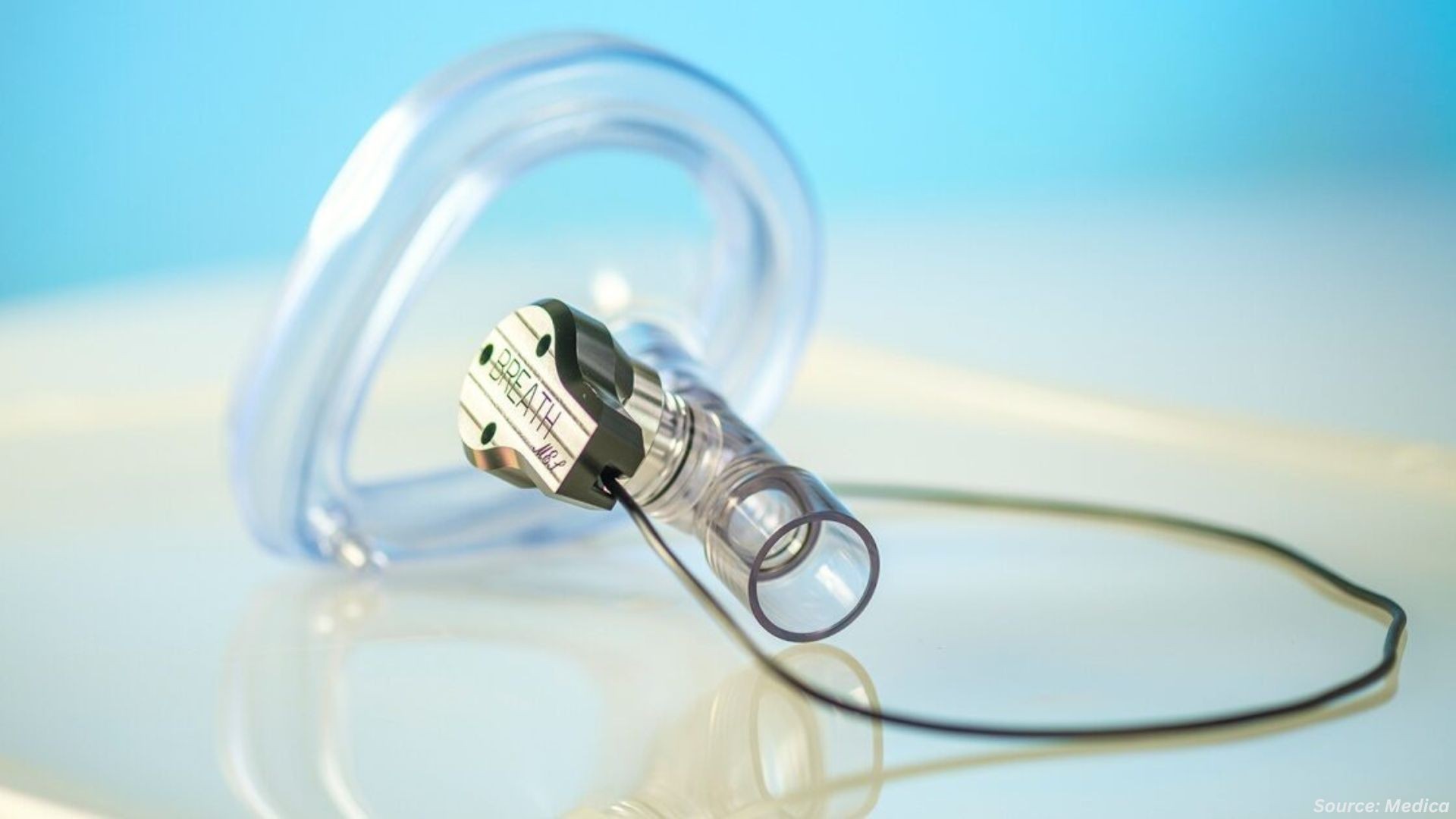
Handheld Surgical Equipment Market by Type (Scalpels, Forceps, Retractors, Scissors, Dilators and Others), By Material Type (Stainless Steel, Titanium, and Others), by Application (General Surgery, Orthopaedic Surgery, Cardiovascular Surgery, Neurosurgery, Laparoscopic Surgery, Gynaecological Surgery and Others), by End User (Hospitals, Ambulatory Surgical Centers, Specialty Clinics, Academic and Research Institutes) – Global Opportunity Analysis and Industry Forecast 2025-2030
Industry Overview
The global Handheld Surgical Equipment Market size was valued at USD 6.25 billion in 2024, and is expected to be valued at USD 6.67 billion by the end of 2025. The industry is projected to grow, hitting USD 9.21 billion by 2030, with a CAGR of 6.7% between 2025 and 2030.
The market is witnessing substantial growth due to the increasing demand for precise and minimally invasive surgical tools. The rise in chronic diseases and the aging population are driving the need for more surgeries, particularly in areas like orthopaedics, cardiovascular health, and cancer treatment.
Technological advancements, including robotics and sensors, are enhancing the precision and functionality of surgical instruments. Innovations in surgical tools are improving patient outcomes by increasing the overall effectiveness of surgeries.
The industry is further being shaped by key players investing in advanced products and expanding their presence across various regions. As healthcare systems evolve and demand for higher-quality surgical solutions grows, handheld surgical equipment is becoming increasingly essential in modern medical practices.
Rising Prevalence of Chronic Diseases Propels the Growth of the Market
The global rise in chronic diseases is a key driver of the handheld surgical equipment market growth. According to the World Heart Federation, cardiovascular diseases were the leading cause of death in 2021, accounting for 20.5 million fatalities.
Alongside cardiovascular conditions, the growing prevalence of cancer and orthopaedic disorders continues to necessitate frequent surgical interventions. Procedures such as coronary artery bypass surgeries and tumour resections rely heavily on precision instruments like scalpels and forceps to ensure successful outcomes.
The increasing incidence of these conditions especially in developing regions with expanding access to healthcare has amplified the demand for handheld surgical tools that offer precision, control, and minimal tissue damage, thereby directly contributing to overall market expansion.
Surge in Global Surgical Procedures Drives the Handheld Surgical Equipment Market Demand
Another key factor driving demand in the handheld surgical equipment market trend is the increasing number of surgeries being performed globally. A latest survey reported that around 34.9 million surgical and nonsurgical aesthetic procedures were performed by plastic surgeons in 2023.
Among them, around 15.8 million were surgical procedures. This surge, including both surgical and aesthetic procedures, highlights the growing demand for advanced surgical tools that offer precision, reduce invasiveness, and aid in faster recovery, ultimately pushing the market forward.
Aging Population and Age-Related Surgical Demand Drives the Market Expansion
The aging global population also plays a critical role in driving the demand for handheld surgical equipment. As the number of elderly individuals rises, so does the prevalence of age-related conditions that require surgical intervention, such as cataract surgeries and joint replacements.
According to a report from the World Economic Forum, the number of people aged 65 and older is expected to double by 2050, reaching 1.6 billion globally. This demographic shift is leading to a higher demand for surgical procedures tailored to older individuals, driving growth of the market.
Regulatory Challenges and Compliance Costs Hinders Market Expansion
While the demand for handheld surgical equipment grows, manufacturers face strict regulations concerning the production and sterilization of surgical instruments. These guidelines, designed to ensure patient safety and instrument effectiveness, can create barriers to market growth.
As per regulatory standards, the complexity and cost of adhering to these regulations pose challenges for manufacturers, increasing the time and resources required for product development and compliance. Also, the high cost of regulatory compliance can hinder innovation and increase operational costs for companies involved in the production of handheld medical devices.
Technological Advancements Such as Integration of Robotics and Sensors Creates Future Growth Opportunities
The integration of cutting-edge technologies, such as robotics and sensor systems, into handheld surgical equipment presents significant growth opportunities. These advancements enhance the precision, dexterity, and real-time feedback capabilities of surgical instruments, offering surgeons better control over procedures and improving surgical outcomes. These tools provide ergonomic benefits, making surgeries less invasive and more efficient. The continuous evolution of these technologies promises to open up new avenues for market growth, as demand for more accurate, advanced, and minimally invasive surgical procedures continues to rise.
The developments of Canady Robotic AI Surgical System in 2023, offered AI-powered software programmes and 3D navigational guided surgical planning, by combines artificial intelligence with cold atmospheric plasma (CAP) technology. This system improves precision by enabling targeted treatment of tumor cells without harming surrounding tissues, making it highly valuable for delicate surgeries.
Additionally, the MiniTac tactile sensor introduced for robot-assisted surgeries allows real-time detection of tumors on tissue surfaces and deeper layers, enhancing the functionality of handheld surgical instruments. These innovations are reshaping handheld surgical equipment, driving its evolution towards more advanced, precise, and minimally invasive solutions.
Market Segmentations and Scope of the Study
The handheld surgical equipment market report is categorized based on type, technology, material type, application, distribution channel, and end-user segments. By type, the market is segmented into scalpels, forceps, retractors, scissors, dilator, Arthroscopic Punches and others. By material type, the market is segmented into stainless steel, titanium, plastic/polymer, and others. By application, the market is segmented into general surgery, orthopaedic surgery, cardiovascular surgery, neurosurgery, laparoscopic surgery, gynaecological surgery, urological surgery, ophthalmic surgery, and others. By distribution channel, the market is segmented into direct sales, distributors, online sales, retail pharmacies, and others. By end user, the market is segmented into hospitals, ambulatory surgical centers, specialty clinics, academic and research institutes, emergency care centers, trauma centers, and others. Regional breakdown and analysis of each of the aforesaid segments includes regions comprising of North America, Europe, Asia-Pacific, and Rest of the World (RoW).
Geographical Analysis
North America continues to dominate the handheld surgical equipment market share, driven by significant healthcare spending, which reached USD 4.9 trillion in 2023, according to the Centers for Medicare & Medicaid Services. This large spending enables healthcare providers to adopt the latest technologies, including advanced handheld surgical instruments. The demand for minimally invasive surgeries, especially in gynaecology, is also rising.
Recent data shows a high number of hysterectomies and other gynaecological procedures, creating further demand for ergonomic, minimally invasive instruments. Key companies in the region, such as Medtronic, Stryker, and Johnson & Johnson, are driving this growth with new product innovations. Notable launches include Medtronic's Harmonic EDGE+ in 2024, an ultrasonic surgical instrument designed to improve precision and patient recovery times. These developments reflect the region's focus on improving surgical outcomes with advanced tools.
The Asia-Pacific region is seeing a surge in the demand for handheld surgical equipment, driven by the increasing prevalence of chronic diseases such as cardiovascular diseases, cancer, and diabetes. For example, over 330 million people in China are living with cardiovascular diseases, as reported by CMS, which increases the need for advanced surgical instruments.
Additionally, the region's growing medical tourism sector, with countries like India, Thailand, and Singapore becoming hubs for affordable yet high-quality surgeries, is propelling market growth. Recent product innovations include Olympus' VISERA 4K UHD System, launched in 2023, which improves visualization during laparoscopic surgeries. This technology enhances the precision of minimally invasive surgeries and supports the region's growing demand for advanced medical solutions.
Europe is witnessing steady growth in the handheld surgical equipment sector due to an aging population and increasing demand for minimally invasive procedures. Key countries like Germany, France, and the UK are investing in modern surgical instruments to address the growing need for orthopaedic, cardiovascular, and gynaecological surgeries. For instance, Karl Storz launched C-MAC Video Laryngoscope in 2024, to improve airway management during both emergency and routine procedures. This tool exemplifies the focus of European companies on improving surgical precision and reducing recovery times through high-quality, minimally invasive equipment.
The rest of the world, which includes regions such as Latin America, the Middle East, and Africa, is witnessing gradual but significant growth. These regions are increasing their healthcare budgets and investing in modern medical technologies to improve medical care. In Latin America, countries like Brazil and Argentina are adopting advanced surgical tools, while the Middle East, particularly the UAE and Saudi Arabia, are attracting medical tourists and enhancing healthcare infrastructure.
In Africa, nations such as South Africa and Nigeria are introducing new surgical technologies to improve healthcare delivery in underserved areas. In 2023, the UAE introduced the Health Information Exchange system, further improving access to healthcare data and facilitating the adoption of advanced medical technologies.
Key Development Strategies Adopted by the Key Players of the Industry
The handheld surgical equipment industry is highly competitive, with leading firms driving innovation and strategic expansion. Zimmer Biomet acquired Embody, Inc., a privately-held medical device company focused on soft tissue healing in 2023. Medtronic received FDA approval for the Symplicity Spyral renal denervation (RDN) system, also known as the Symplicity blood pressure procedure, for the treatment of hypertensionin 2023.
On the other hand, Johnson & Johnson, via Ethicon, introduced the ECHELON 3000 Stapler in 2022 and the MONARCH Bronchoscope in 2023 in China, emphasizing global market penetration. Also, Stryker acquired Artelon in 2024 for soft tissue fixation and launched the MakoSmart Robotic Arm System for precision surgery and Smith & Nephew debuted the CORI Digital Tensioner in 2023.
Key Benefits
-
The report provides quantitative analysis and estimations of the industry from 2025 to 2030, which assists in identifying the prevailing handheld surgical equipment market opportunities.
-
The study comprises a deep-dive analysis of the current and future handheld surgical equipment industry trends to depict prevalent investment pockets in the sector.
-
Information related to key drivers, restraints, and opportunities and their impact on the industry is provided in the report.
-
Competitive analysis of the key players, along with their market share is provided in the report.
-
SWOT analysis and Porters Five Forces model is elaborated in the study.
-
Value chain analysis in the market study provides a clear picture of roles of stakeholders.
Handheld Surgical Equipment Market Key Segments
By Type
-
Scalpels
-
Disposable Scalpels
-
Reusable Scalpels
-
Sensor-Enabled Scalpels
-
-
Forceps
-
Tissue Forceps
-
Hemostatic Forceps
-
Dressing Forceps
-
Micro Forceps
-
Disposable Forceps
-
Robotic Forceps
-
-
Biopsy Forceps
-
Endoscopic Biopsy Forceps
-
Cervical Biopsy Forceps
-
Myocardial Biopsy Forceps
-
-
-
Retractors
-
Self-Retaining Retractors
-
Wire Retractors
-
Reusable Retractors
-
-
Scissors
-
Operating Scissors
-
Microsurgical Scissors
-
Bandage Scissors
-
Robotic Scissors
-
Others
-
-
Dilators
-
Arthroscopic Punches
-
Others
By Material Type
-
Stainless Steel
-
Titanium
-
Plastic/Polymer
-
Others
By Application
-
General Surgery
-
Appendectomy
-
Hernia Repair
-
Cholecystectomy
-
-
Orthopaedic Surgery
-
Fracture Fixation
-
Joint Replacement
-
Arthroscopy
-
-
Cardiovascular Surgery
-
Coronary Artery Bypass
-
Valve Replacement
-
Vascular Grafting
-
-
Neurosurgery
-
Craniotomy
-
Spinal Fusion
-
Tumor Resection
-
-
Laparoscopic Surgery
-
Laparoscopic Cholecystectomy
-
Laparoscopic Appendectomy
-
Laparoscopic Hysterectomy
-
-
Gynaecological Surgery
-
Hysterectomy
-
Oophorectomy
-
Endometriosis Surgery
-
-
Urological Surgery
-
Prostatectomy
-
Nephrectomy
-
Cystoscopy
-
-
Ophthalmic Surgery
-
Cataract Surgery
-
Glaucoma Surgery
-
Corneal Transplant
-
-
Others
By Distribution Channel
-
Direct Sales
-
Distributors
-
Online Sales
-
Retail Pharmacies
-
Others
By End User
-
Hospitals
-
Ambulatory Surgical Centers
-
Specialty Clinics
-
Academic and Research Institutes
-
Emergency Care Centers
-
Trauma Centers
-
Others
By Region
-
North America
-
The U.S.
-
Canada
-
Mexico
-
-
Europe
-
The U.K.
-
Germany
-
France
-
Italy
-
Spain
-
Denmark
-
Netherlands
-
Finland
-
Sweden
-
Norway
-
Russia
-
Rest of Europe
-
-
Asia-Pacific
-
China
-
Japan
-
India
-
South Korea
-
Australia
-
Indonesia
-
Singapore
-
Taiwan
-
Thailand
-
Rest of Asia-Pacific
-
-
Rest of the World (RoW)
-
Latin America
-
Middle East
-
Africa
-
Key Players
-
Zimmer Biomet Holdings, Inc.
-
B. Braun Melsungen AG
-
Becton, Dickinson and Company
-
Medline Industries, LP
-
Peters Surgical SASU
-
Medtronic plc
-
Abbott Laboratories
-
Boston Scientific Corporation
-
Stryker Corporation
-
Smith & Nephew plc
-
Johnson & Johnson
-
Olympus Corporation
-
CONMED Corporation
-
Integra LifeSciences Holdings Corporation
-
KLS Martin Group
REPORT SCOPE AND SEGMENTATION:
|
Parameters |
Details |
|
Market Size in 2025 |
USD 6.67 billion |
|
Revenue Forecast in 2030 |
USD 9.21 billion |
|
Growth Rate |
CAGR of 6.7% 2025 to 2030 |
|
Analysis Period |
2024–2030 |
|
Base Year Considered |
2024 |
|
Forecast Period |
2025–2030 |
|
Market Size Estimation |
Billion (USD) |
|
Growth Factors |
|
|
Countries Covered |
28 |
|
Companies Profiled |
15 |
|
Market Share |
Available for 10 companies |
|
Customization Scope |
Free customization (equivalent to up to 80 working hours of analysts) after purchase. Addition or alteration to country, regional, and segment scope. |
|
Pricing and Purchase Options |
Avail customized purchase options to meet your exact research needs. |

















 Speak to Our Analyst
Speak to Our Analyst

























